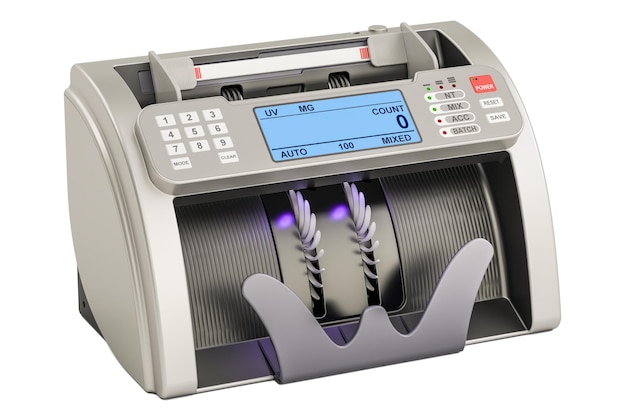Running a small business successfully often comes down to how well you manage your warehouse inventory. Think of it as the heart of your supply chain, keeping everything ticking along nicely. So, let’s dive into some top tips to help you get a handle on warehouse inventory management.
First off, what is warehouse inventory management? It’s all about keeping a close eye on the flow of goods in, around, and out of your warehouse. This includes tracking inventory, restocking, picking orders, packing, and shipping. The main goal is to have the right products, in the right amounts, in the right place, at the right time. This way, you can meet customer demand while keeping costs low and operations efficient.
To do this, you’ll need to use technology like inventory management software and barcode systems. You’ll also need to follow best practices and strategies to keep inventory levels optimal, avoid running out of stock, minimize carrying costs, and boost overall warehouse performance.
Good warehouse management can make processes smoother for all kinds of businesses. Whether you’re an Ecommerce company trying to keep up with eBay inventory management or a restaurant trying to manage your bar inventory more efficiently, it’s all about optimization.
Here’s why warehouse inventory management is so important:
- Optimizing Inventory Levels: By having the right amount of inventory at the right time, you can avoid running out of stock (which can lead to lost sales) and minimize excess inventory (which ties up capital and storage space).
- Improving Order Fulfillment: Proper inventory management helps you fulfill customer orders accurately and on time. This can reduce order errors and improve customer satisfaction.
- Reducing Costs: Efficient inventory management practices can help cut costs associated with holding inventory. By minimizing excess inventory and optimizing storage space, you can reduce carrying costs like storage, insurance, and obsolescence expenses.
- Enhancing Forecasting and Planning: Warehouse inventory data can provide valuable insights for demand forecasting and strategic planning. By analyzing historical inventory data, you can anticipate demand fluctuations, plan production schedules, and make informed decisions about inventory replenishment.
- Streamlining Operations: Effective inventory management can streamline warehouse operations by optimizing workflows, reducing unnecessary handling, and minimizing inventory movement. This can increase efficiency, productivity, and throughput in the warehouse.
So, how do you manage warehouse inventory effectively? Here’s a step-by-step guide:
- Choose the Right Warehouse Management System (WMS): Start by selecting a WMS that aligns with your business needs and offers features like real-time inventory tracking, order management, and integration capabilities with other systems.
- Implement a Warehouse Inventory Management System (WIMS): A WIMS can help you track and manage inventory levels accurately. Look for a system that enables barcode scanning, inventory categorization, and real-time updates.
- Optimize Warehouse Layout: An efficient warehouse layout can maximize storage space, reduce travel time, and optimize workflow. Organize inventory based on demand, with frequently picked items located closer to shipping areas.
- Classify Inventory with Methods Like ABC Analysis: Use methods like ABC analysis to prioritize items based on their importance and value. Classify items into categories (A, B, C) based on criteria like sales volume, value, or turnover rate.
- Conduct Regular Audits and Cycle Counting: Regular audits and cycle counting can help maintain inventory accuracy and identify discrepancies promptly. Implement a schedule for counting inventory regularly, focusing on different sections of the warehouse.
- Leverage Technology for Enhanced Accuracy and Efficiency: Use technology like barcode generators and scanners, RFID tags, and inventory management software to streamline processes, minimize manual errors, and improve inventory visibility.
- Understand the Difference Between Inventory and Warehouse Management: Distinguish between retail inventory management systems (managing stock levels, tracking inventory movements) and warehouse management (optimizing physical warehouse operations). Each requires distinct strategies and systems.
- Specify the Role of the Warehouse Manager: The warehouse manager plays a critical role in overseeing inventory management processes, coordinating warehouse activities, and implementing best practices for warehouse management.
By following these steps, you can establish robust warehouse inventory management practices to improve efficiency, accuracy, and overall operational performance.
However, there are some challenges to implementing and operating a warehouse management system:
- Inventory Inaccuracy: Inaccurate inventory records can lead to stockouts, overstocking, and order fulfillment delays.
- Poor Forecasting: Inaccurate demand forecasting can result in either excess inventory or stockouts.
- Inefficient Warehouse Layout: Suboptimal warehouse layout and storage configurations can lead to inefficient space utilization, longer picking times, and increased labor costs.
- Lack of Visibility: Limited visibility into inventory levels, locations, and movements within the warehouse can make it difficult to track inventory accurately and respond promptly to changes in demand or supply chain disruptions.
- Inventory Shrinkage and Theft: Loss of inventory due to theft, shrinkage, or damage during handling and transportation can result in financial losses and impact customer satisfaction.
But don’t worry, there are ways to overcome these challenges:
- Employ AS/RS: Use automated storage and retrieval systems (AS/RS) to streamline processes, improve accuracy, and increase operational efficiency.
- Utilize Inventory Management Software: Implement robust warehouse and/or retail inventory management software to track inventory levels in real time, automate inventory replenishment, and generate accurate reports for better decision-making.
- Implement Just-in-Time (JIT) Inventory Management: Adopt JIT inventory management practices to minimize excess inventory, reduce holding costs, and improve inventory turnover rates by replenishing inventory only when needed.
- Train Staff and Establish Standard Operating Procedures (SOPs): Provide comprehensive training to warehouse staff on proper inventory management techniques, safety protocols, and use of equipment. Develop SOPs to ensure consistency and efficiency in warehouse operations.
- Implement Quality Control Measures: Implement quality control measures to ensure the accuracy and integrity of inventory data. Conduct regular audits, cycle counting, and quality checks to identify and resolve discrepancies promptly.
- Optimize Warehouse Layout and Storage: Design an efficient warehouse layout that optimizes space utilization, minimizes travel distances, and facilitates the smooth flow of goods. Organize inventory based on demand, with fast-moving items placed closer to shipping areas.
- Enhance Supply Chain Visibility: Improve visibility into supply chain processes by implementing technologies such as track-and-trace systems and integrating with suppliers and logistics partners.
By addressing these challenges and implementing optimization strategies, you can enhance your warehouse inventory management practices, improve operational efficiency, and meet customer demands more effectively.



